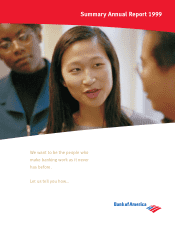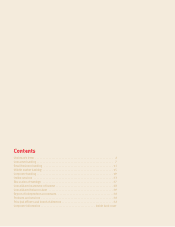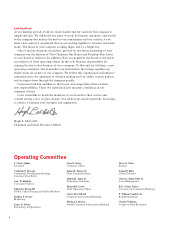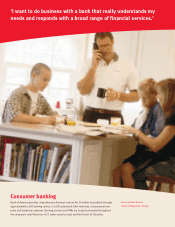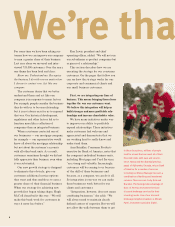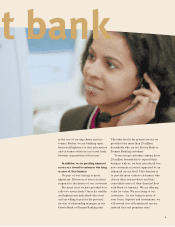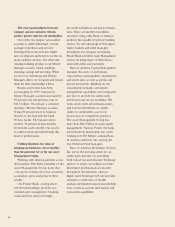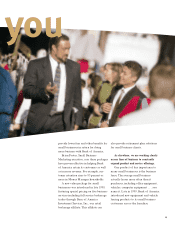Bank of America 1999 Annual Report Download - page 7
Download and view the complete annual report
Please find page 7 of the 1999 Bank of America annual report below. You can navigate through the pages in the report by either clicking on the pages listed below, or by using the keyword search tool below to find specific information within the annual report.
These results represent significant progress, but we aren’t standing still.
We are continuing to look closely at each of our business units to determine
where we stand to generate the best returns going forward. Our funding decisions
will reflect an honest assessment of current and potential profitability and how a
given business contributes to the company’s overall relationship strategy. The point
for our line executives is clear. Our expectations are aggressive. And the bar has
been raised.
Your company made great strides in 1999 in managing its risk and capital. We
took several steps, including consolidating a number of offshore trading platforms,
to reduce the risk on our balance sheet, with a goal of producing a more consistent
earnings stream in the future. We also made greater-than-expected progress on our
aggressive share buyback program. Through the end of 1999, we had purchased
78 million shares as part of a 130 million share buyback program announced in June.
We believe our customer-focused strategy, combined with a vigorous approach
to internal funding and risk and capital management, will enable us to deliver
significantly enhanced financial performance in the future, as reflected in the new
financial goals for our company. We moved our goal for return on equity to 20 to 24
percent from 17 to 21 percent and our goal for annual earnings-per-share growth of
12 to 15 percent was reaffirmed. We also introduced a goal of 7 to 9 percent annual
revenue increases, signaling to the market that we intend to pursue a growth strategy.
All this said, our stock price continues to underperform. We believe there are
several reasons. First, the entire banking industry is experiencing pressure on earn-
ings created primarily by tightening interest-rate spreads. Second, weak earnings
reported by several competitors in the past year have led some on Wall Street to
speculate that we may be next in line. And finally, the markets continue to be
skeptical about our ability to produce earnings gains from our merger.
While the first reason is out of our hands — and it stands to reason that all
financial stocks will remain under pressure as long as there is concern about inflation
and higher interest rates — we believe the second two reasons are unfounded. As I said
above, execution is the key, but we are convinced the initiatives now in place will pay
off in greater shareholder value going forward.
Keeping our promises.
When we created the new Bank of America in 1998, we made a promise to all
our communities that we would work hard to build stronger cities, towns and
neighborhoods in all the markets where we do business. I am pleased to report
that we have kept this promise and that we continue to build on it.
First and foremost, we are on track to meet our goals in our 10-year, $350 billion
commitment to lending and investing in low- and moderate-income communities.
This program has benefited countless communities across our franchise.
At a stop in East St. Louis on President Clinton’s “New Markets Tour” in July,
Cathy Bessant, president of our Community Development Banking Group,
announced that we will invest $500 million in inner-city neighborhoods through
the new Bank of America Catalyst Fund. Acting on our conviction that poverty-
stricken American neighborhoods should get first crack at American investment
dollars, the fund will help rebuild our cities by investing in local businesses that
are fundamental to urban growth.
We also continued to champion downtown revitalization with an investment
commitment of $100 million for the Howard Street corridor in West Baltimore.
These and many other projects reflect our conviction that building strong
communities is good business.
96 97 98 99
30.6
30.3
26.7
32.5
96 97 98 99
18.7
17.6
15.4
18.0
Revenue
(Dollars in billions)
Noninterest expense
(Dollars in billions)
5

